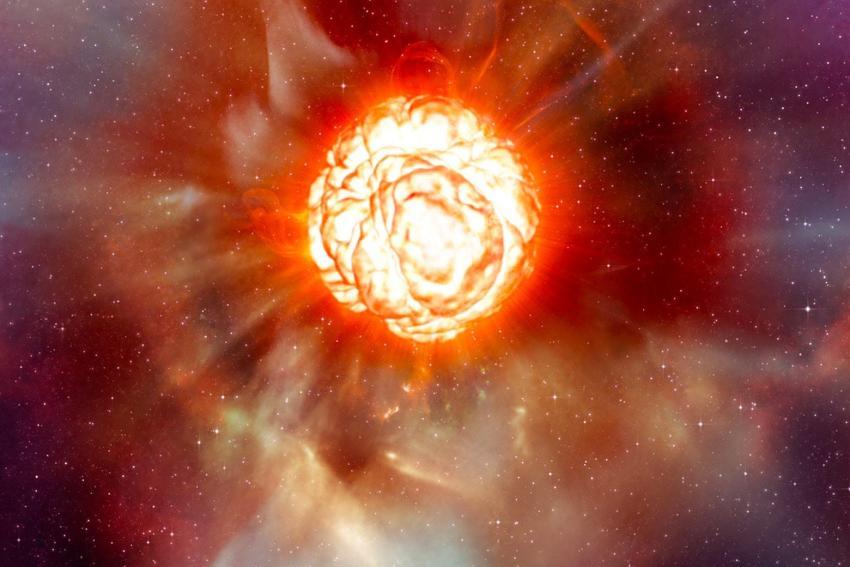CHEMISTRY
Massive stars sound warning they are about to go supernova
 Astronomers from Liverpool John Moores University and the University of Montpellier have devised an early warning system to sound the alert when a massive star is about to end its life in a supernova explosion.
Astronomers from Liverpool John Moores University and the University of Montpellier have devised an early warning system to sound the alert when a massive star is about to end its life in a supernova explosion.
In this new study, researchers determined that massive stars (typically between 8 and 20 solar masses) in the last phase of their lives, the so-called ‘red supergiant’ phase, will suddenly become around a hundred times fainter in visible light in the last few months before they die. This dimming is caused by a sudden accumulation of material around the star, which obscures its light.
Until now, it was unknown how long it took the star to accrete this material. Now, for the first time, researchers have simulated how red supergiants might look when they are embedded within these pre-explosion cocoons.
Old telescope archives show that images do exist of stars that went on to explode around a year after the image was taken. The stars appear normal in these images, meaning they cannot yet have built up the theoretical circumstellar cocoon. This suggests that the cocoon is assembled in less than a year, which is considered to be extremely fast.
Benjamin Davies from Liverpool John Moores University said: “The dense material almost completely obscures the star, making it 100 times fainter in the visible part of the spectrum. This means that the day before the star explodes, you likely wouldn't be able to see it was there. Until now, we’ve only been able to get detailed observations of supernovae hours after they’ve already happened. With this early-warning system, we can get ready to observe them in real-time, point the world’s best telescopes at the precursor stars, and watch them getting ripped apart in front of our eyes.”
